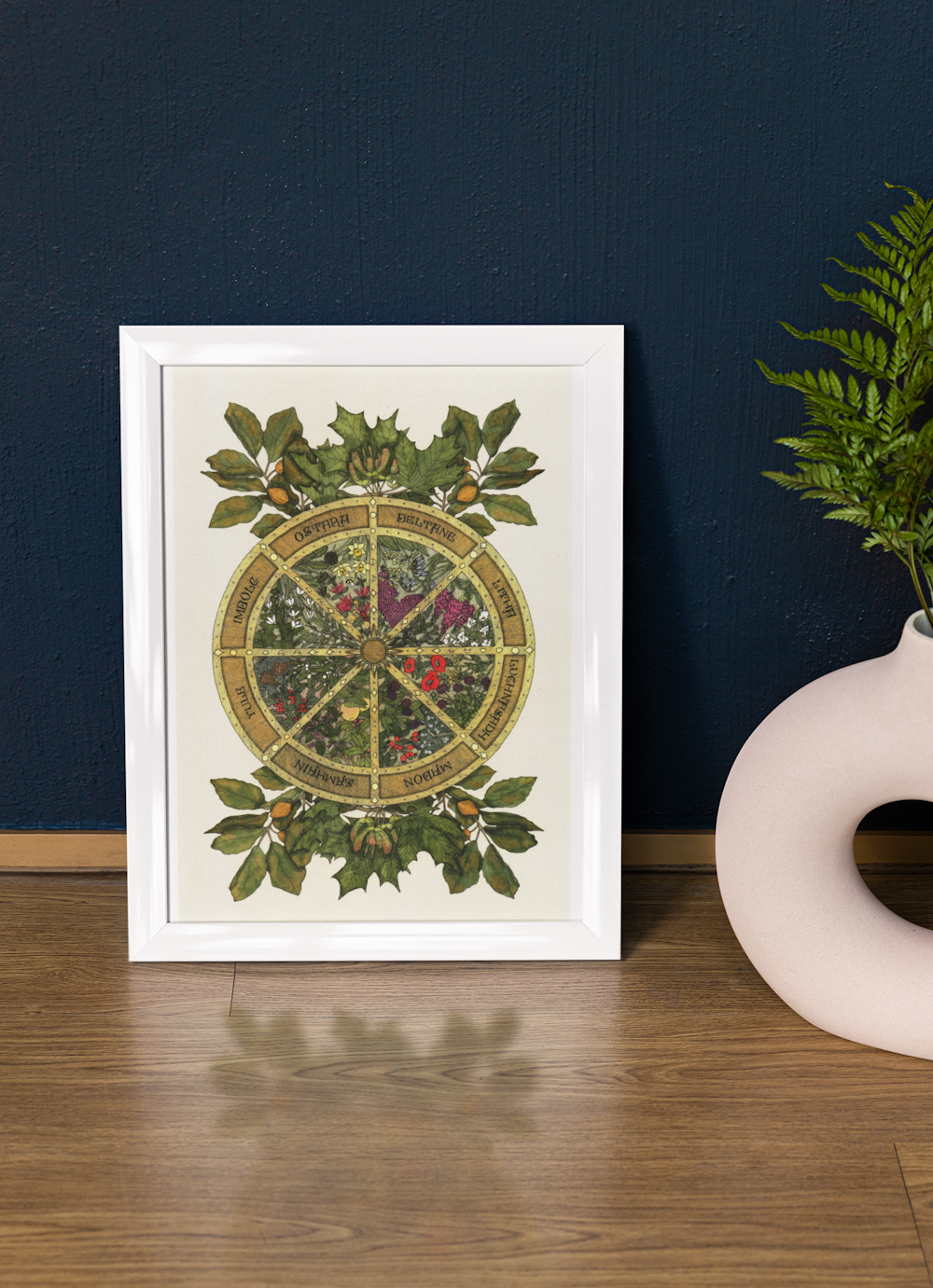Your basket is currently empty!
The Wheel of the Year
The Wheel of the Year is a pagan symbol representing the quarter and cross-quarter celebrations throughout the year that mark the changing seasons, although it is also used and celebrated by people who aren’t pagans too now, as a way to stay connected to nature and the passing of the year.
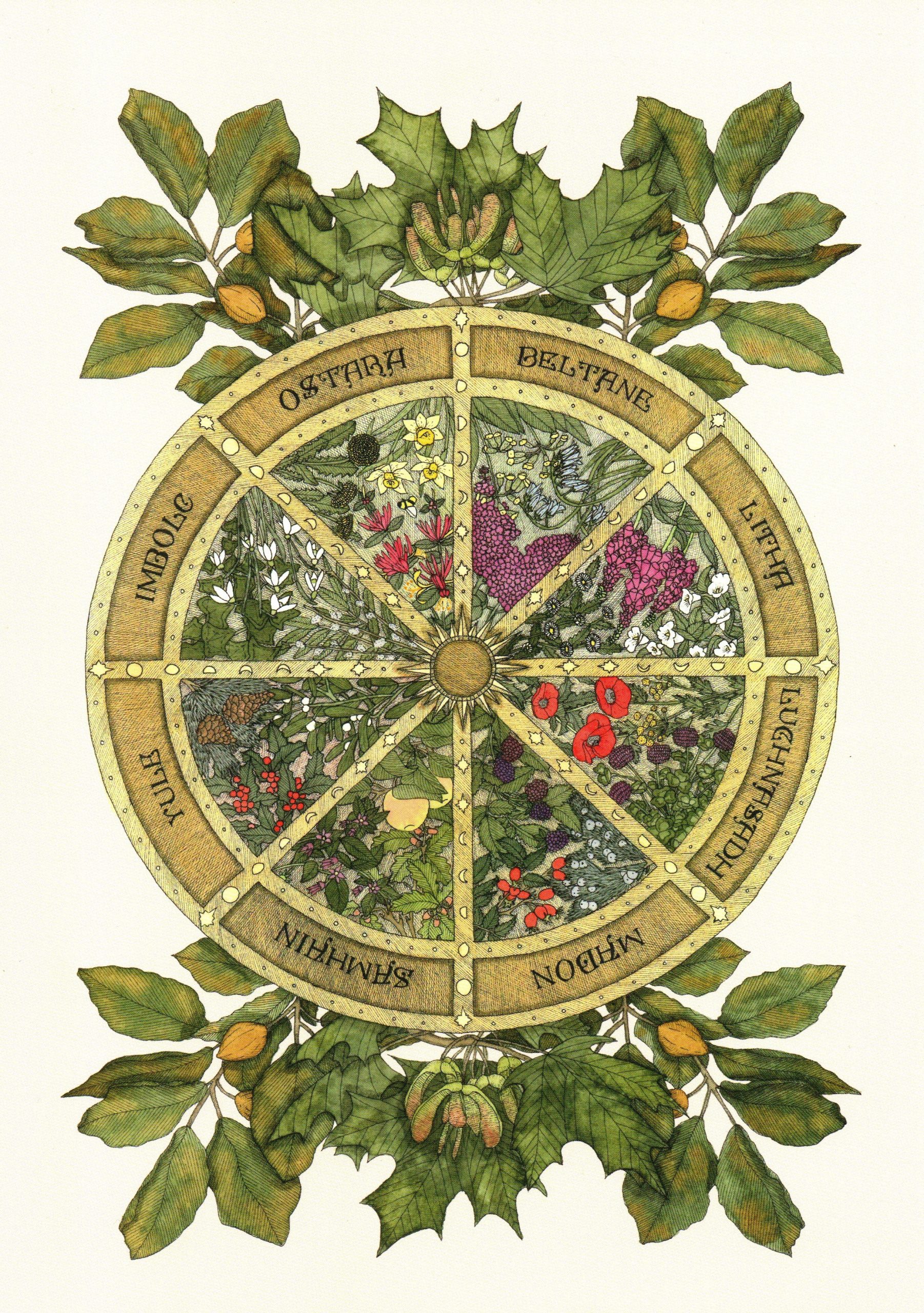
The Wheel of the Year is actually a relatively recent invention, it was created in the 1970’s by taking the traditional and ancient Celtic festivals of Samhain, Imbolc, Beltane, and Lughnasadh and adding the Solsitces and Equinoxes that were observed and celebrated by some European people, Yule, Ostara, Litha, and Mabon, although some of the names were invented in the 1970’s too, they are actually the winter solstice, spring equinox, summer solstice, and autumn equinox.
Even though the Wheel is a more recent development, these points in the year have been celebrated by Celts and Europeans for a very long time, they are believed to pre-date Christianity.
To me they make sense, they are ideal points to pause, to notice what nature is doing, to take stock of our lives, and to celebrate and be grateful for what we have.
The Festivals
Samhain is usually celebrated on October 31st, although the Celts may actually have celebrated it from sunset on the 31st to sunset on November 1st. It marks the end of the harvest season and the end of the pastoral year, and of course, the beginning of the new pastoral year. It is a time for honouring the ancestors and being grateful for the harvest. It is a fire festival and was marked by the lighting of bonfires.
Yule, or Winter Solstice is celebrated on the 21st December, the longest night. It is a celebration welcoming in the light, knowing that the days get longer from here and nature will start to wake up again.
Imbolc is celebrated on February 1st or 2nd, it is a celebration it the first buds appearing, the first signs of spring, the fertility of the earth, and everything waking up again.
Ostara, or Spring Equinox is on 20th March, it’s a celebration of balance, day and night are of equal length and spring is really here.
Beltane is on May 1st and it marks the start of summer. It is a fire festival with bonfires traditionally being lit. It is a celebration of life and fertility.
Litha, or Summer Solstice is on June 21st and it is the longest day of the year. Bonfires are lit to boost the sun’s strength and to ensure a healthy harvest.
Lughnasadh is on the 1st August. This marks the first grain harvest, reaping the rewards of your work so far, and is a time for gratitude.
Mabon, or Autumn Equinox is on the 22nd September and it is the second time in the year when the day and night are of equal length. A time for balance and reflection and to prepare for the cold months ahead.
Making the Wheel of the Year Artwork
This was and idea I had been playing around with for a while and it took quite a few attempts to get the initial drawings to a point where I was happy with the balance and with the level of detail.
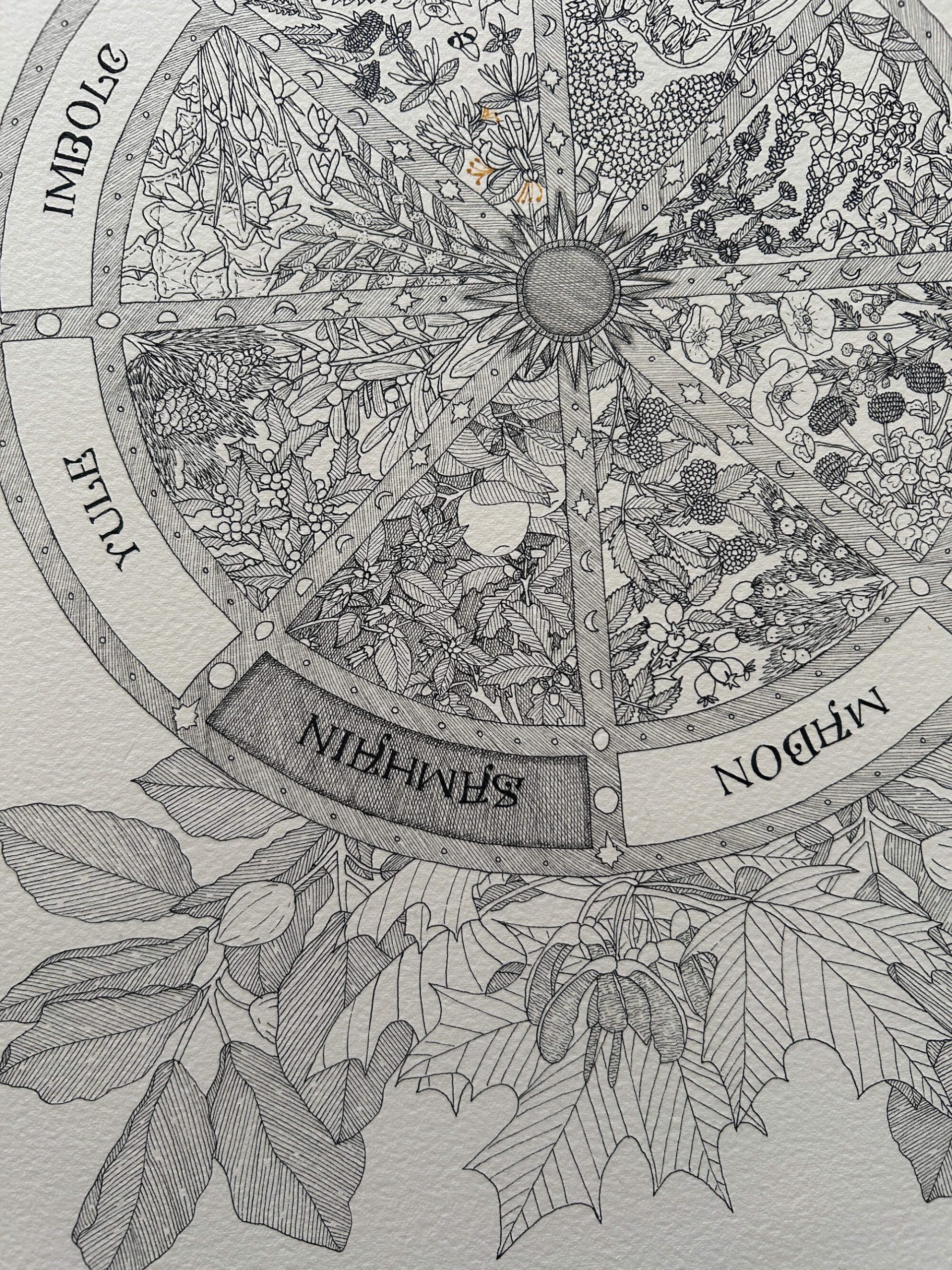
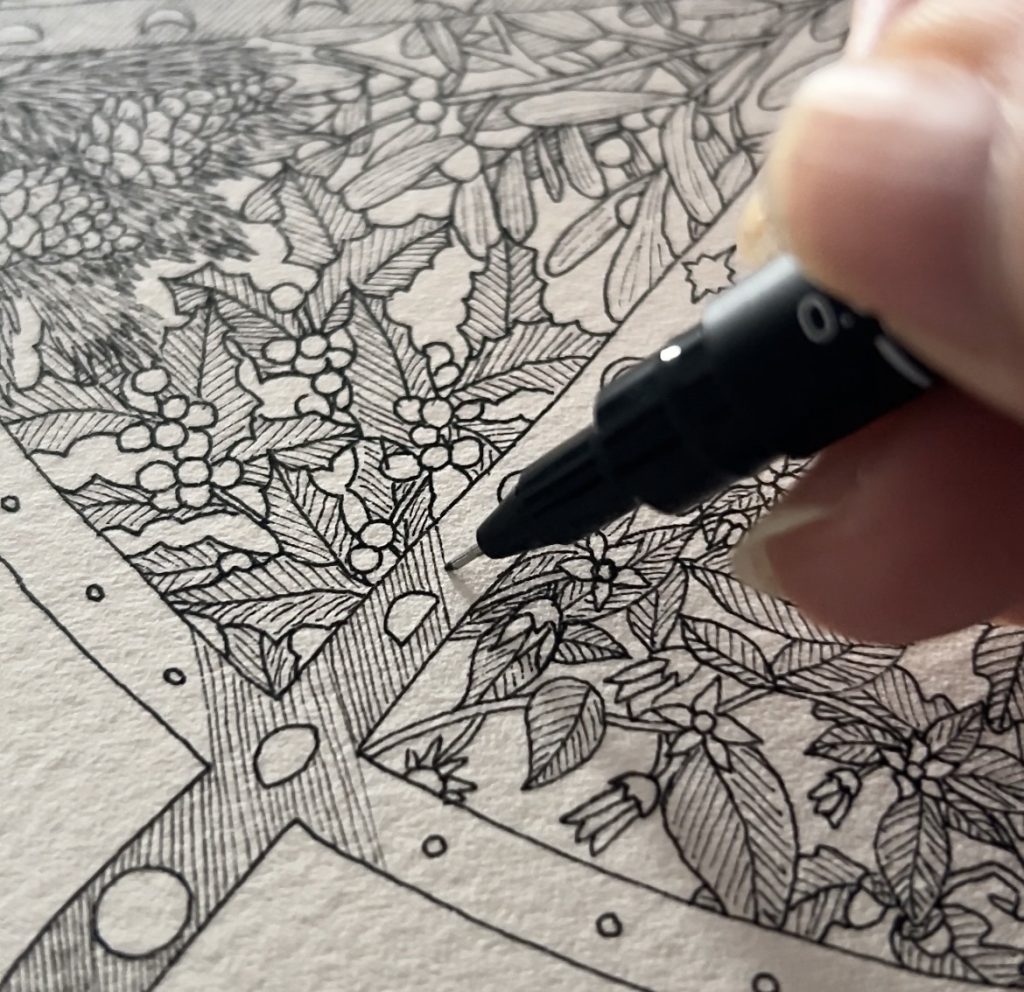
There is often a lot more ink in my work than is obvious at first look.
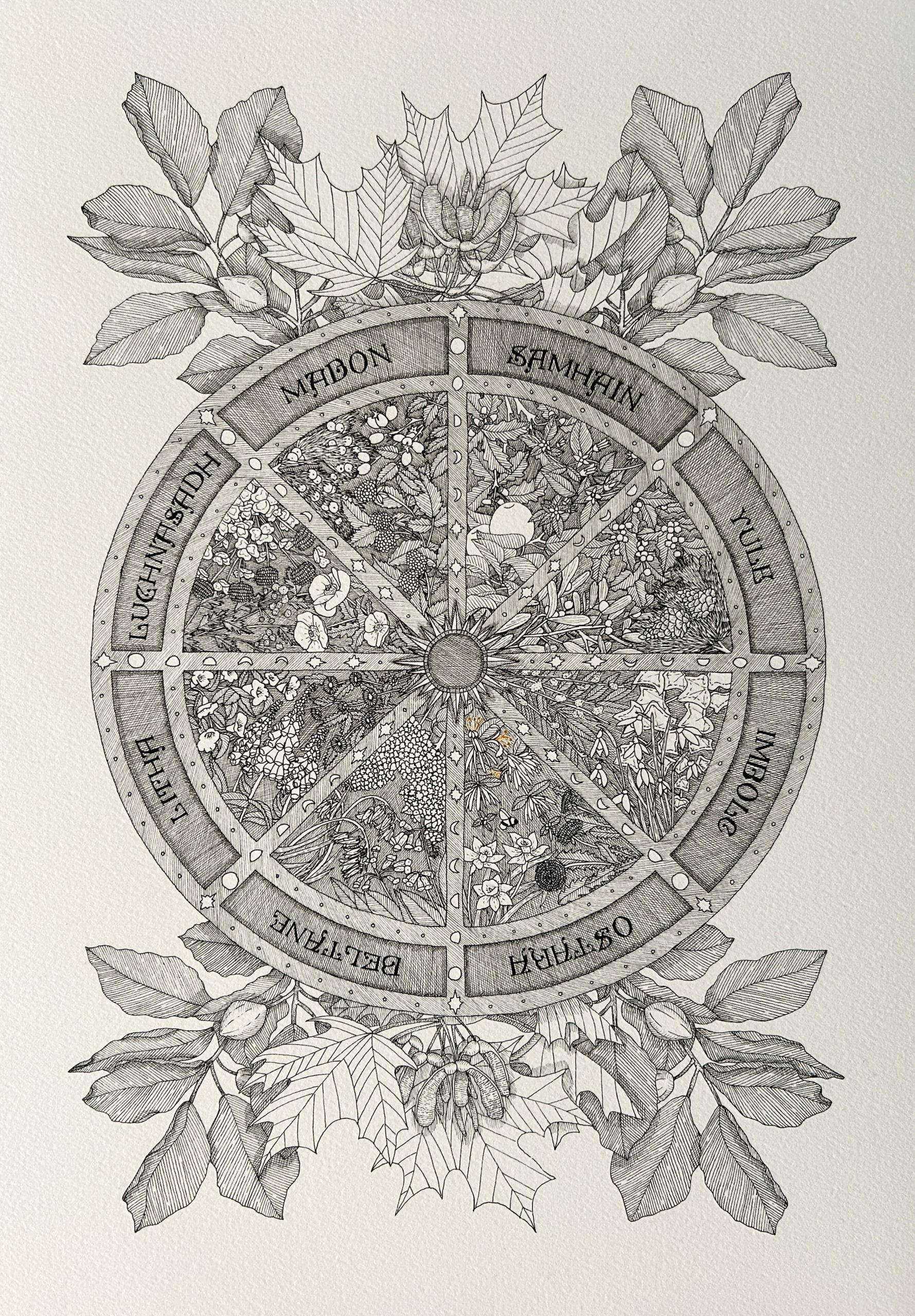
And then the colour is slowly added.
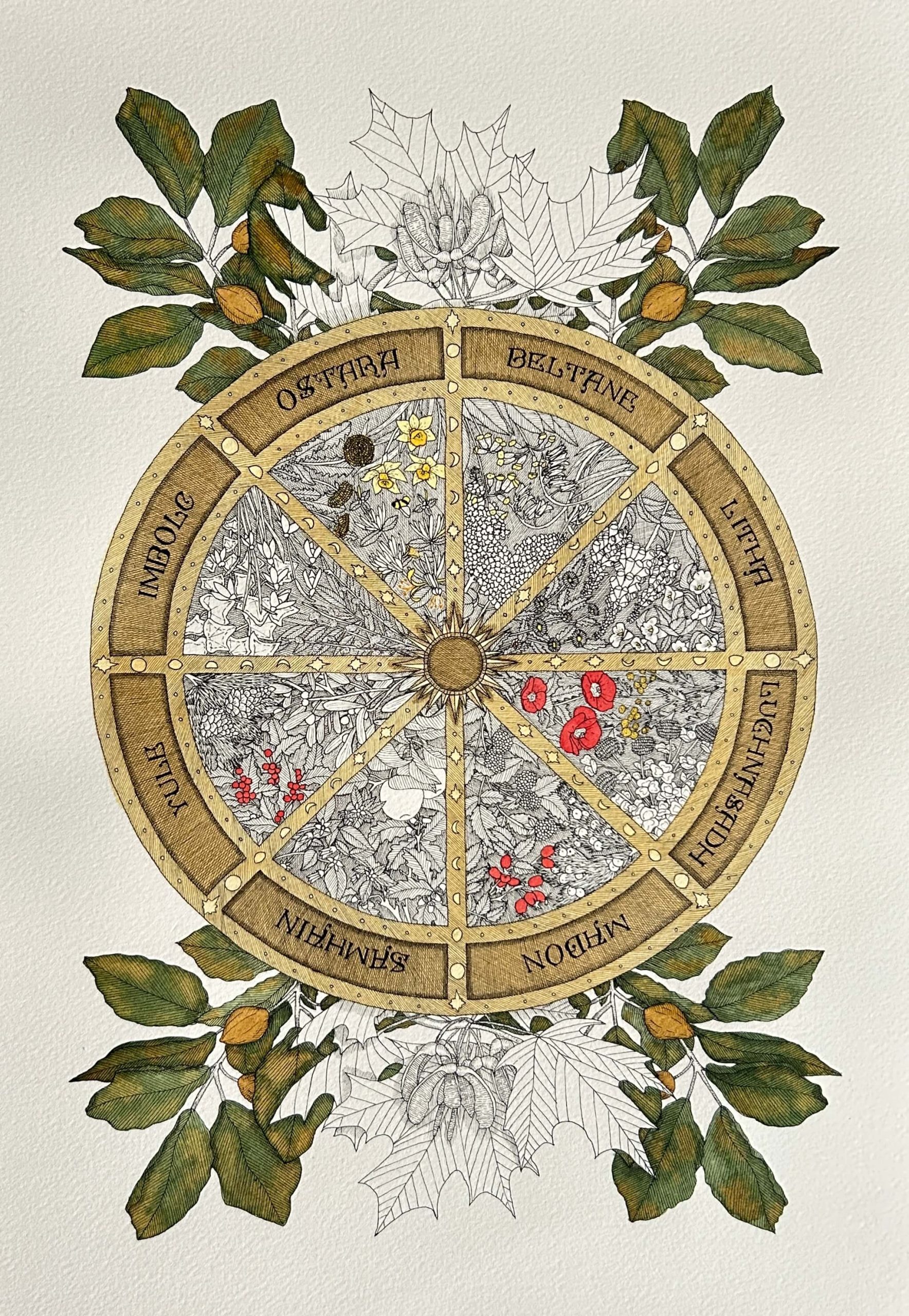
Nothing about my work is fast, it is naturally a slow process and I love that I can give each little detail my attention.
The Wheel of the Year artwork is currently available to own as a high quality giclée print.
